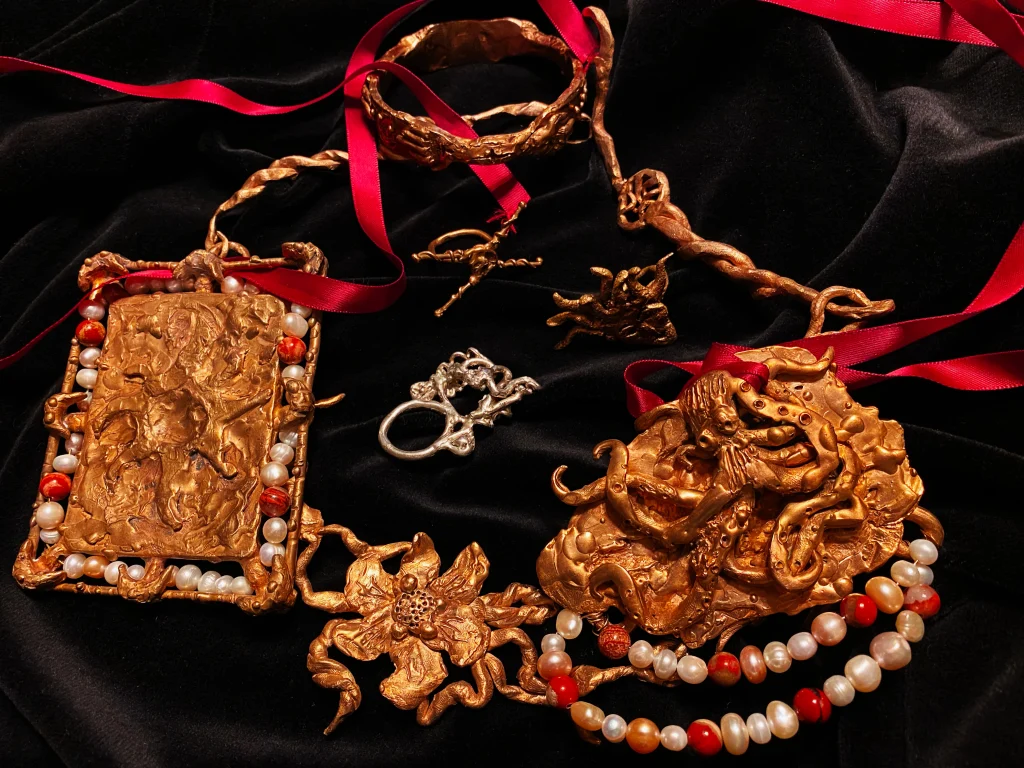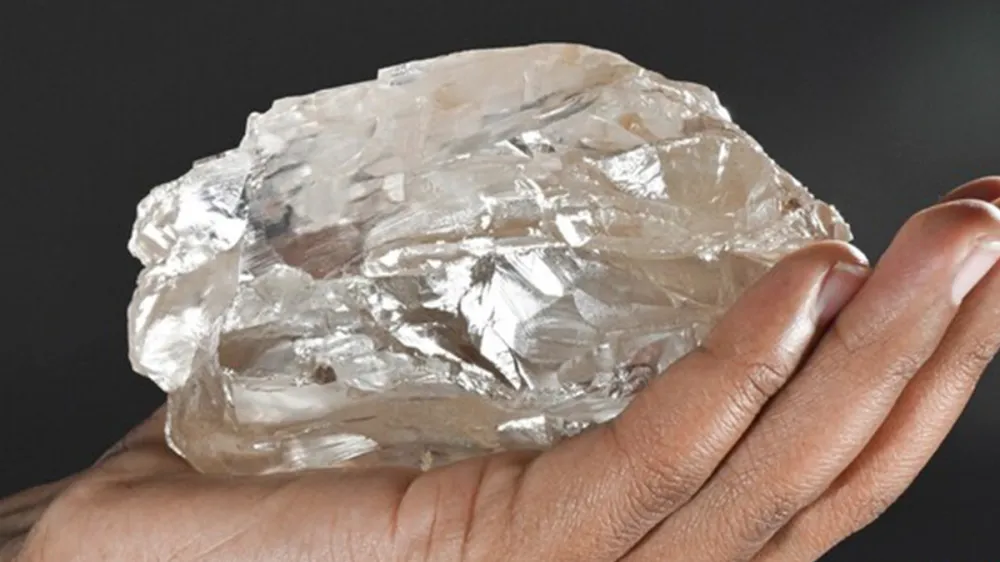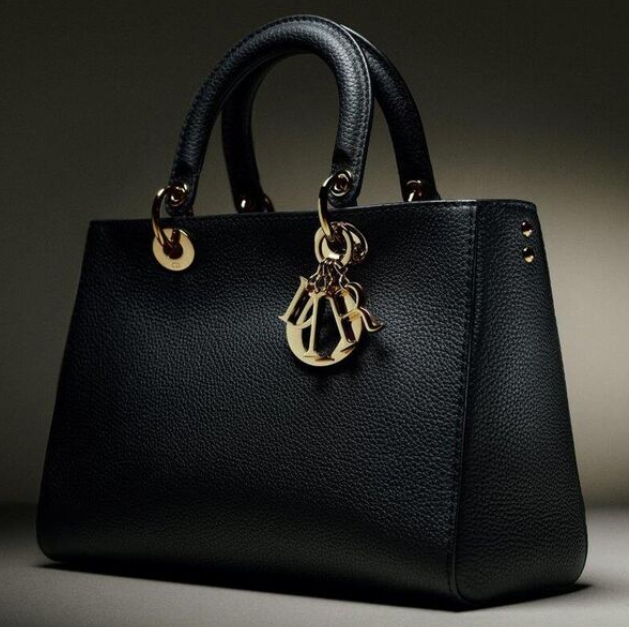Delve into the world of luxury jewelry creation and discover the intricate process, impeccable craftsmanship, and exquisite materials that bring these remarkable pieces to life.
Ever wondered what goes on behind the scenes to create the breathtaking beauty of luxury jewelry? Join us as we unveil the intricate process, masterful craftsmanship, and the fusion of exceptional materials that make each piece a true work of art.
1.Inspiration and Design
Luxury jewelry is a true testament to the union of artistic vision and skilled craftsmanship. At the heart of this extraordinary creation process lies the essential element of inspiration and design. From the spark of an idea to the final rendering, the creative journey of luxury jewelry brings together a multitude of influences and transforms them into remarkable, wearable works of art. In this article, we will explore the significance of inspiration and design in the world of luxury jewelry and how they contribute to the creation of these captivating pieces.
Inspiration serves as the catalyst for the entire creative process. Jewelry designers draw inspiration from a wide range of sources, such as nature’s intricate patterns, architectural marvels, historical eras, cultural symbolism, and personal experiences. These diverse influences ignite the imagination and pave the way for the creation of unique, one-of-a-kind designs.
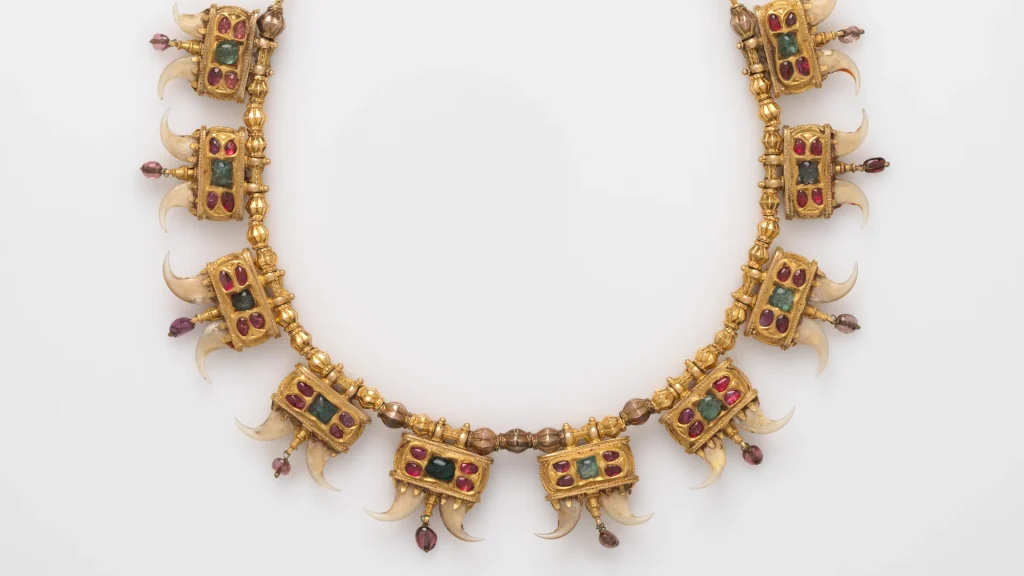
The design phase is where the initial spark of inspiration takes shape and evolves into a tangible concept. Jewelry designers meticulously translate their vision onto paper, using sketches and renderings to capture the essence of the envisioned piece. They consider every detail, from the overall shape and proportions to the placement of gemstones and intricate embellishments. This initial design serves as a blueprint for the subsequent stages of production, guiding the hands of the artisans who will bring it to life.
Luxury jewelry designers possess a keen understanding of materials, gemstones, and craftsmanship techniques. They explore the inherent qualities of precious metals, such as gold, platinum, and silver, understanding how different metals can enhance the design’s aesthetic and structural integrity. The choice of gemstones is equally crucial, as they bring color, brilliance, and individuality to the piece. Designers consider the cut, color, clarity, and carat weight of gemstones, carefully selecting those that best complement and enhance the overall design.
During the design process, designers must also take into account the wearer’s comfort and practicality. They ensure that the piece is not only visually stunning but also ergonomically sound and wearable. Balancing aesthetics with wearability is a delicate art that requires a deep understanding of both design principles and the human form.
Collaboration is another important aspect of the design process. Jewelry designers often work closely with skilled artisans, gemologists, and craftsmen to bring their vision to life. This collaboration ensures that the design is executed with the highest level of precision and artistry. It allows for the integration of expert knowledge and techniques that elevate the piece’s quality and refine its details.
The process of inspiration and design in luxury jewelry is a dynamic and iterative one. Designers often revisit their initial concepts, refining and polishing them until they achieve the perfect balance of aesthetics, craftsmanship, and wearability. They constantly push the boundaries of creativity, seeking to create pieces that are not only visually striking but also emotionally captivating.
2.Material Selection
Luxury jewelry is a world of opulence, elegance, and timeless beauty. Behind the captivating designs and impeccable craftsmanship lies a crucial element that binds these remarkable pieces together: material selection. The choice of materials, including precious metals and gemstones, plays a pivotal role in creating jewelry that exudes luxury and stands the test of time. In this article, we will explore the art of material selection and how it brings forth the exquisite beauty of luxury jewelry.
Precious Metals: The Foundation of Elegance
Precious metals form the foundation of luxury jewelry, providing a durable and luxurious base for the intricate designs and gemstone settings. Gold, platinum, and silver are the most commonly used metals in luxury jewelry, each with its own unique characteristics.
Gold, with its radiant glow and timeless appeal, is a symbol of luxury and wealth. It is available in various colors, including yellow, white, and rose gold, offering versatility in design. The purity of gold is measured in karats, with 24k being the highest purity. However, for practical purposes, lower karat gold (such as 18k or 14k) is often used, as it is more durable and suitable for everyday wear.
Platinum, renowned for its durability and rarity, is a popular choice for luxury jewelry. Its naturally white color enhances the brilliance of gemstones and provides a sleek and modern aesthetic. Platinum is exceptionally resistant to tarnish, making it an ideal choice for pieces that are meant to be cherished for a lifetime.
Silver, known for its lustrous sheen and affordability, is also used in luxury jewelry. It provides a more accessible option while still offering a sophisticated and elegant appeal. However, silver is prone to tarnish and requires regular maintenance to preserve its shine.
Gemstones: The Splendor of Nature
Gemstones are the crown jewels of luxury jewelry, captivating the eye with their exceptional beauty and rarity. These precious stones come in an array of colors, sizes, and cuts, and each brings its own unique allure to the piece.
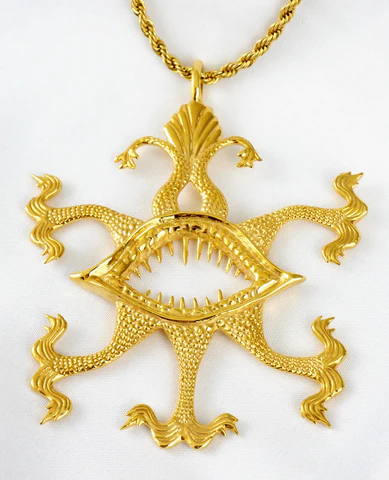
Diamonds, renowned for their brilliance and durability, are the epitome of luxury. They are graded based on the “Four Cs”: cut, color, clarity, and carat weight. The cut determines the diamond’s ability to reflect light, while color and clarity affect its purity and brilliance. Diamonds are often used as center stones in engagement rings or as accents in various jewelry pieces, adding a touch of sparkle and sophistication.
Emeralds, with their rich green hues and mesmerizing clarity, are prized gemstones in luxury jewelry. Their vibrant color and captivating transparency make them a popular choice for statement rings, necklaces, and earrings. The inclusion of emeralds brings a regal and luxurious touch to any piece.
Sapphires, available in a spectrum of colors but most commonly associated with deep blue, offer a striking alternative to traditional gemstones. Their velvety hues evoke a sense of elegance and sophistication, and they are often used to create stunning engagement rings, pendants, and bracelets.
Rubies, with their fiery red hues, symbolize passion, power, and vitality. These captivating gemstones command attention and add a vibrant touch to luxury jewelry. Whether used as the focal point or combined with other gemstones, rubies infuse a sense of drama and opulence into the piece.
Beyond the “big four” gemstones, luxury jewelry also showcases a wide range of rare and exotic gemstones. From the enchanting blue hues of tanzanite to the iridescent play-of-color in opals, these unique gemstones bring a sense of individuality and exclusivity to the jewelry.
Luxury jewelry is a realm where artistry meets precision, and one of the pivotal techniques that bring these remarkable pieces to life is wax modeling. This intricate process plays a crucial role in the creation of exquisite jewelry, allowing designers and artisans to visualize, refine, and perfect their creations before they take shape in precious metals and gemstones. In this article, we will explore the art of wax modeling and how it contributes to the creation of breathtaking luxury jewelry.
3.Wax Modeling
Wax modeling serves as a bridge between imagination and reality in the jewelry-making process. It begins with the jewelry designer’s vision, transforming sketches and renderings into three-dimensional representations. By working with wax, designers can better understand the scale, proportions, and intricate details of their designs before moving on to the production stage.
The process of wax modeling starts with the selection of the appropriate type of wax, which is often a blend of natural and synthetic waxes that offer the desired hardness and malleability. The wax is then shaped and carved by hand or using specialized tools to create the intricate forms and patterns envisioned by the designer.
The skilled artisans who specialize in wax modeling meticulously sculpt the wax, adding depth, dimension, and texture to the piece. This delicate process requires patience, precision, and a keen eye for detail. Every curve, contour, and facet is carefully crafted to bring the design to life.
Wax modeling not only helps in visualizing the final piece but also serves as a practical tool for assessing its wearability and functionality. Designers can experiment with different angles, shapes, and sizes to ensure that the jewelry piece is comfortable to wear and aesthetically pleasing from every angle. The wax model allows for adjustments and refinements to be made before the piece proceeds to the casting and production stages.
Once the wax model is finalized, it is used to create a mold for casting the metal. The mold is made by encasing the wax model in a refractory material and then subjecting it to heat. The wax melts away, leaving behind a cavity that will be filled with molten metal during the casting process. This lost-wax casting technique ensures that the final piece retains the intricate details and nuances of the original wax model.
Wax modeling also allows for customization and personalization in luxury jewelry. Artisans can incorporate unique elements, such as engravings, textures, or personalized initials, into the wax model. These customizations add a personal touch to the piece, making it truly one-of-a-kind and enhancing its sentimental value.
In addition to its practical applications, wax modeling is a celebration of artistry and craftsmanship. It showcases the skill and expertise of the artisans who bring the designer’s vision to life. The delicate and precise nature of wax modeling requires a mastery of sculpting techniques and an understanding of materials, enabling artisans to create intricate and captivating designs.
wax modeling is an essential step in the creation of luxury jewelry, allowing designers and artisans to transform concepts into tangible masterpieces. It serves as a crucial tool for visualization, refinement, and customization, ensuring that the final piece meets the highest standards of craftsmanship and aesthetics. The art of wax modeling unveils the magic behind luxury jewelry, breathing life into designs and setting the stage for the breathtaking beauty that awaits in the world of fine jewelry.
4.Casting
Casting is a vital and intricate process in the creation of luxury jewelry, playing a pivotal role in bringing the remarkable pieces together. This technique allows artisans to transform molten metal into intricate shapes and forms, laying the foundation for the exquisite craftsmanship that characterizes luxury jewelry. In this article, we will explore the art of casting and its significance in the creation of these remarkable pieces.
The casting process begins with the creation of a wax model, meticulously carved by skilled artisans. This model captures the design and intricate details envisioned by the jewelry designer. The wax model serves as a prototype, providing a tangible representation of the final jewelry piece.
Once the wax model is perfected, it is encased in a mold made of a heat-resistant material, such as plaster or investment. The mold is carefully crafted to capture every nuance and detail of the wax model. Channels, called sprues, are added to the mold to allow for the flow of molten metal and the release of air during the casting process.
The mold is then heated to a specific temperature, causing the wax to melt and leave behind a negative space within the mold. This step is referred to as the “lost wax” process, as the wax is lost in the creation of the mold. The negative space created is an exact replica of the wax model.
With the mold ready, the next step is the casting itself. Molten metal, often gold, platinum, or silver, is poured into the mold through the sprues. The metal fills the negative space left by the melted wax, taking on the precise shape and details of the wax model. The molten metal is left to cool and solidify within the mold.
Once the metal has cooled, the mold is carefully broken, revealing the rough casting of the jewelry piece. This rough casting, also known as the “blank,” requires further work to transform it into the final masterpiece. Skilled artisans meticulously shape, file, and polish the metal, removing any imperfections and refining the piece to achieve the desired form and finish.
Casting allows for the creation of intricate and complex designs that would be challenging to achieve through other methods. It enables artisans to bring to life the delicate filigree work, ornate patterns, and intricate details that characterize luxury jewelry. The versatility of casting also allows for the incorporation of various elements, such as gemstone settings, engravings, and decorative embellishments, seamlessly integrating them into the overall design.
The casting process in luxury jewelry production requires a high level of skill, precision, and attention to detail. Artisans who specialize in casting bring years of experience and expertise to ensure that each piece is crafted with the utmost care and precision. The mastery of this technique allows for the creation of jewelry that showcases impeccable craftsmanship and reflects the artistic vision of the designer.
casting is an integral part of the creation process for luxury jewelry. It allows artisans to transform molten metal into remarkable pieces, bringing the intricate designs and envisioned details to life. Through the art of casting, luxury jewelry embodies the perfect fusion of creativity, craftsmanship, and the allure of precious metals, resulting in exquisite pieces that captivate the eye and stand the test of time.
5.metalwork
In the world of luxury jewelry, metalwork serves as the backbone that brings together the remarkable elements of design, gemstones, and craftsmanship. This art form encompasses a range of techniques that shape, mold, and manipulate metals to create intricate structures, settings, and embellishments. From the selection of precious metals to the meticulous crafting of details, metalwork plays a vital role in transforming raw materials into exquisite pieces of wearable art.
The Choice of Precious Metals
The journey of metalwork begins with the selection of precious metals that form the foundation of luxury jewelry. Gold, platinum, and silver are among the most commonly used metals due to their durability, malleability, and inherent beauty. Each metal brings its unique characteristics and aesthetic appeal to the final piece.
Gold, with its warm and lustrous glow, is a perennial favorite in luxury jewelry. Its ability to be crafted into intricate designs and its enduring value make it a preferred choice for both classic and contemporary pieces. Yellow gold exudes a timeless elegance, while white gold offers a modern and sophisticated aesthetic. Rose gold, with its delicate pink hue, adds a touch of romance and femininity to jewelry designs.
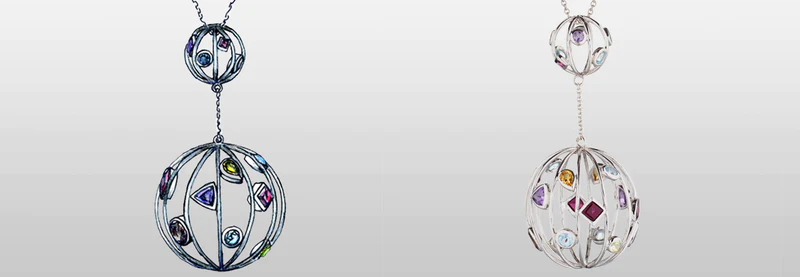
Platinum, known for its strength and purity, is highly sought after for its durability and natural white sheen. It is often used for setting diamonds and other precious gemstones, providing a secure and stylish backdrop that allows the stones to shine.
Silver, while more affordable than gold and platinum, still holds a special place in luxury jewelry. Its cool and sleek appearance lends itself well to minimalist and contemporary designs, making it a popular choice for those seeking a more understated elegance.
The Artistry of Metalwork
Once the precious metal is selected, skilled artisans embark on the artistry of metalwork, using a variety of techniques to shape, mold, and transform the metal into intricate designs and structures.
Soldering and Joining: Metalworkers use heat and solder to join separate pieces of metal, creating the framework for the jewelry piece. Whether it’s connecting a band to form a ring, linking chain links for a necklace, or attaching clasps and findings, precise soldering techniques ensure a strong and seamless connection.
Forming and Shaping: Metal can be shaped and formed in various ways to create the desired structure and design. Techniques such as hammering, bending, and forging are employed to give metals their unique shapes, curves, and textures. Metalworkers meticulously shape and refine the metal to achieve precise proportions and contours, ensuring a harmonious balance in the final piece.
Stone Setting: Metalwork also involves the art of stone setting, where gemstones are secured within the metal structure. Various setting techniques, such as prong setting, bezel setting, and pave setting, are utilized to hold gemstones securely while allowing their beauty to be showcased. The metalwork must be executed with precision, ensuring that the stones are held securely in place while maximizing their brilliance and sparkle.
Embellishments and Details: Metalwork often involves intricate embellishments and details that elevate the design of the jewelry piece. Filigree work, where delicate threads or wires of metal are twisted and soldered to create intricate patterns, adds a touch of intricacy and refinement. Milgrain detailing, achieved by creating tiny beads along the metal edges, imparts a vintage and textural appeal. Engraving, another form of metalwork, allows for personalized messages or decorative motifs to be etched onto the metal surface, adding a layer of customization and sentiment.
Finishing Touches: The final stage of metalwork involves polishing and finishing. Metalworkers use various tools, compounds, and techniques to refine the metal surface, removing any imperfections and achieving a smooth, reflective finish. This meticulous
6.Stone Setting
Stone setting is a pivotal stage in the creation of luxury jewelry, where the exquisite gemstones are securely placed within the metal framework, transforming a piece from a mere design into a captivating masterpiece. This intricate and highly skilled technique not only enhances the beauty of the gemstones but also adds a unique touch of craftsmanship and sophistication to the overall jewelry piece. In this article, we will explore the art of stone setting and how it brings these remarkable pieces together in luxury jewelry.
Stone setting serves two essential purposes: to hold the gemstones securely in place and to showcase their brilliance and beauty. Expert stone setters employ various techniques and methods to achieve these goals, carefully considering factors such as the type of gemstone, design aesthetics, and overall structural integrity.
One of the most common stone-setting techniques is the prong setting. Delicate metal claws or prongs are meticulously crafted and bent over the edges of the gemstone to hold it firmly in place. This method allows maximum light to enter the stone, enhancing its brilliance and fire. Prong settings are often used for solitaire diamond rings, where the focus is on showcasing the center stone.
Another popular technique is the bezel setting, where a metal rim is carefully wrapped around the circumference of the gemstone, holding it securely. Bezel settings provide excellent protection to the gemstone while adding a sleek and modern aesthetic. This technique is commonly used for colored gemstones, as it enhances their color and creates a smooth and flush surface.
Pave setting involves placing multiple small gemstones closely together, secured by tiny prongs or beads. The gemstones are set in such a way that they appear to pave the surface of the jewelry piece, creating a dazzling and continuous sparkle. Pave settings are commonly used in diamond-encrusted bands, earrings, and pendants, adding a touch of glamour and brilliance to the overall design.
Channel setting involves placing gemstones side by side within a metal channel, with the metal walls acting as a secure framework. This technique is often used for accent stones or smaller diamonds, creating a sleek and seamless look. Channel-set gemstones provide a refined and elegant touch to the jewelry piece, adding a continuous line of sparkle.
Apart from these techniques, there are other intricate stone-setting methods such as bead setting, flush setting, and tension setting, each offering unique visual effects and characteristics. The choice of stone-setting technique depends on factors such as the design, durability, and the desired aesthetic appeal.
The art of stone setting requires a high level of skill, precision, and attention to detail. Expert stone setters meticulously evaluate the size, shape, and color of each gemstone, ensuring a perfect fit within the metal framework. They use specialized tools, such as gravers, burrs, and burnishers, to manipulate the metal and secure the gemstones with utmost care and accuracy.
Stone setting not only enhances the beauty and brilliance of gemstones but also plays a vital role in the overall structural integrity of the jewelry piece. Each stone is carefully positioned and secured to withstand everyday wear and tear, ensuring longevity and durability.
stone setting is an integral part of luxury jewelry craftsmanship, where the remarkable gemstones are transformed into breathtaking works of art. The artistry and skill involved in stone setting bring together the intricate metalwork and the brilliance of gemstones, creating pieces that captivate the eye and evoke a sense of awe. Whether it’s a diamond engagement ring, an emerald pendant, or a sapphire bracelet, the stone setting technique serves as a testament to the mastery of craftsmanship and the timeless beauty of luxury jewelry.
7.Engraving
Luxury jewelry is not only a reflection of exceptional craftsmanship and exquisite materials but also a means of personal expression and storytelling. One of the key elements that contribute to the uniqueness and individuality of luxury jewelry is engraving. Engraving is an art form that involves etching intricate patterns, initials, or symbols onto metal, bringing these remarkable pieces together and adding a personal touch that enhances their significance. In this article, we will explore the art of engraving and how it plays a vital role in luxury jewelry.

Engraving has a rich history dating back centuries, with its origins rooted in ancient civilizations. Throughout the years, engraving techniques have evolved and become more sophisticated, allowing artisans to create intricate and delicate designs on precious metals. Today, advanced tools and techniques, including hand engraving and laser engraving, enable artisans to achieve unparalleled precision and detail in their work.
The art of engraving in luxury jewelry serves multiple purposes. Firstly, it adds a personal touch to the piece, making it unique and special to the wearer. Initials, names, dates, or messages can be delicately engraved onto the surface of rings, pendants, or bracelets, serving as a reminder of significant moments, loved ones, or cherished memories. This personalization makes luxury jewelry more than just an accessory—it becomes a meaningful keepsake that carries sentimental value.
Engraving also allows for the inclusion of intricate patterns and designs that enhance the overall aesthetic appeal of the jewelry piece. Artisans can create elaborate motifs, floral patterns, or abstract designs that transform a simple metal surface into a visually captivating work of art. These embellishments bring a sense of elegance and individuality to the jewelry, making it a truly unique and eye-catching piece.
Moreover, engraving can serve a functional purpose in luxury jewelry. It can be used to create a textured or matte surface, providing contrast and enhancing the overall design. Engraving can also be used to secure gemstones in place by creating small prongs or settings that hold the stones securely. These functional engravings ensure the longevity and durability of the jewelry while adding an extra layer of detail and sophistication.
The process of engraving requires great skill, precision, and patience. Whether executed by hand or using advanced technology, the engraver must have a steady hand and an eye for detail. Each stroke and line must be carefully planned and executed to achieve the desired result. The depth and width of the engravings are meticulously controlled to ensure a balanced and harmonious appearance.
Engraving not only adds a personal touch but also unites luxury jewelry as a whole. It creates a sense of cohesion and harmony within a collection by incorporating recurring motifs or patterns across different pieces. For example, a signature design element or a specific engraving style can be applied to a range of jewelry, creating a cohesive and distinctive aesthetic that ties the collection together.
engraving is a remarkable art form that brings luxury jewelry to life, adding a personal touch, enhancing aesthetics, and uniting collections. It allows individuals to customize their jewelry, creating a piece that is not only visually stunning but also deeply meaningful. The artistry and precision involved in engraving demonstrate the meticulous attention to detail and the dedication to craftsmanship that define luxury jewelry. Whether it’s a delicate monogram, an elaborate pattern, or a functional engraving, the art of engraving elevates luxury jewelry to new heights of elegance and individuality.
8.Polishing and Finishing
Polishing and finishing are the final steps in the creation of luxury jewelry, adding the perfect touch of brilliance and refinement that brings the entire piece together. This critical stage transforms raw materials into dazzling works of art, elevating the beauty and allure of the jewelry. In this article, we will explore the significance of polishing and finishing in luxury jewelry and how they contribute to the creation of remarkable pieces.
Polishing is a meticulous process that involves the use of specialized tools and techniques to refine the surface of the jewelry piece. The aim is to achieve a smooth texture, remove any imperfections, and enhance the shine and luster of the metal and gemstones. Expert jewelers employ various polishing compounds, buffing wheels, and polishing cloths to carefully work on different areas of the piece, ensuring that every detail is perfected.
One of the primary objectives of polishing is to create a mirror-like finish on the metal. This is particularly important for precious metals like gold, platinum, and silver, as a flawless, high-shine surface enhances the overall beauty and luxurious appeal of the piece. The polishing process helps to remove scratches, surface blemishes, and any oxidation that may have occurred during earlier stages of production, resulting in a pristine surface that reflects light brilliantly.
In addition to refining the metal, polishing plays a crucial role in enhancing the gemstones’ brilliance and sparkle. Each gemstone is carefully examined and polished to optimize its facets and ensure that it captures and reflects light to its fullest potential. By meticulously polishing gemstones, jewelers bring out their vibrant colors, clarity, and scintillation, elevating the visual impact and overall allure of the jewelry piece.
Finishing is the final touch that completes the jewelry piece, giving it a unique character and enhancing its overall aesthetics. This stage involves the addition of decorative elements, texture, or surface treatments that add depth and dimension to the design. Finishing techniques may include engraving, filigree work, milgrain detailing, satin or brushed finishes, or the addition of precious stones in intricate patterns.
Engraving, for example, allows artisans to etch intricate designs, initials, or symbols onto the metal, adding a personal and meaningful touch to the piece. Filigree work involves delicate wirework that creates intricate patterns and adds an air of elegance and intricacy. Milgrain detailing, created by carefully applying tiny beads or bumps along the edges of the metal, imparts a vintage or antique look to the jewelry, adding a touch of nostalgia and character.
Satin or brushed finishes offer a subtle, matte texture to the metal, providing a sophisticated and contemporary look to the piece. These finishes are often used in combination with polished areas to create contrast and visual interest. Furthermore, the strategic placement of precious stones in specific patterns or settings enhances the overall design, creating focal points and enhancing the piece’s overall beauty.
Polishing and finishing are essential in luxury jewelry, as they bring together all the elements of the piece and elevate it to its full potential. The meticulous craftsmanship, attention to detail, and skill involved in these processes ensure that the final product is nothing short of a masterpiece. The interplay of light, reflections, and textures achieved through polishing and finishing creates a captivating visual experience that sets luxury jewelry apart.
polishing and finishing are integral parts of the creation of luxury jewelry. These final stages refine the surface, enhance the brilliance of gemstones, and add unique character and elegance to the piece. The painstaking efforts of expert jewelers ensure that every detail is perfected, resulting in remarkable jewelry that embodies exceptional beauty, craftsmanship, and timeless allure. Polishing and finishing are the final strokes of artistry that bring luxury jewelry to life, making each piece a treasure to be cherished
9.Quality Control:
In the world of luxury jewelry, quality control is an essential process that ensures each piece meets the highest standards of craftsmanship, beauty, and durability. From the initial stages of production to the final inspection, quality control plays a pivotal role in bringing together remarkable pieces that exude luxury, excellence, and timeless beauty. In this article, we will explore the significance of quality control in luxury jewelry and how it contributes to the creation of extraordinary pieces.

Quality control begins at the very foundation of luxury jewelry production. It starts with the careful selection of materials, such as precious metals and gemstones, to ensure they meet strict quality criteria. Precious metals like gold, platinum, and silver undergo rigorous testing to verify their purity and authenticity. Gemstones are carefully evaluated for their cut, color, clarity, and carat weight, ensuring that only the most exceptional stones are used in the jewelry pieces.
During the manufacturing process, quality control is implemented at every step. Skilled artisans and craftsmen meticulously shape, solder, and set gemstones, paying close attention to the precision and integrity of each detail. This ensures that the final piece not only meets the design specifications but also reflects the highest level of craftsmanship and artistry.
One of the critical aspects of quality control in luxury jewelry is the assessment of gemstone quality. Expert gemologists carefully examine each stone, using various techniques and instruments to evaluate its characteristics. This includes assessing the clarity, color, and cut of diamonds, as well as the characteristics unique to other gemstones like emeralds, sapphires, and rubies. The gemologists also verify the authenticity and origin of the stones, ensuring they are ethically sourced and meet the brand’s standards.
Another important aspect of quality control is ensuring the structural integrity and durability of the jewelry piece. This involves rigorous testing to ensure that settings, clasps, and other components are secure and robust. The piece is subjected to stress tests and inspections to ensure it can withstand everyday wear and retain its beauty over time.
In addition to the physical aspects, quality control also encompasses aesthetic considerations. Expert jewelers meticulously inspect the piece, examining it from various angles to ensure that it meets the brand’s standards of beauty and visual appeal. This includes assessing the symmetry, proportions, and overall balance of the piece, ensuring that it presents a harmonious and captivating appearance.
Before the final presentation to the customer, each luxury jewelry piece undergoes a comprehensive quality control check. Experienced jewelers examine the piece under magnification, assessing it for any imperfections, flaws, or irregularities. They ensure that gemstones are securely set, metalwork is flawless, and the overall finish meets the brand’s exacting standards.
The role of quality control extends beyond the individual piece of jewelry. It also encompasses the brand’s commitment to customer satisfaction and after-sales service. Luxury jewelry brands understand the importance of maintaining a reputation for excellence, and thus, they provide comprehensive warranties, repair services, and assistance to ensure that customers’ prized possessions are well-cared for.
quality control is an integral part of the production process in luxury jewelry. From the selection of materials to the final inspection, each step is carefully executed to ensure that the pieces meet the highest standards of craftsmanship, beauty, and durability. Quality control not only ensures that the jewelry reflects the brand’s commitment to excellence but also provides customers with confidence, knowing they are acquiring a remarkable piece of artistry and enduring quality.
10.Certification and Authentication
Luxury jewelry holds a special place in the hearts of collectors and enthusiasts, representing the pinnacle of beauty, craftsmanship, and sophistication. As these remarkable pieces make their way into the hands of discerning buyers, the importance of certification and authentication becomes paramount. In this article, we will explore the significance of certification and authentication in the world of luxury jewelry and how they ensure the value, quality, and authenticity of these exquisite pieces.
Certification is the process of assessing and documenting the quality, characteristics, and attributes of a jewelry piece by a reputable and independent authority. Authentication, on the other hand, verifies the genuineness and origin of the materials used, such as gemstones and precious metals. Together, certification and authentication provide a comprehensive understanding of a luxury jewelry piece, offering assurance to both buyers and sellers.
One of the primary benefits of certification and authentication is the assurance of quality. Independent gemological laboratories and expert appraisers evaluate the characteristics and attributes of gemstones, such as diamonds, emeralds, and sapphires, determining their cut, color, clarity, and carat weight. This information is documented in a grading report, providing a standardized assessment of the gemstone’s quality and value. Likewise, certification verifies the quality of the metal used, ensuring that it meets the required standards of purity and durability.
Authenticity is another crucial aspect addressed by certification and authentication. Luxury jewelry often features rare gemstones and precious metals, and their origin and provenance greatly impact their value and desirability. Through meticulous examination, experts can determine the origin of gemstones, tracing them back to their source. This information is included in the certification, assuring buyers that they are acquiring genuine and ethically sourced gemstones. Likewise, authentication verifies the authenticity of the precious metals used, ensuring that they are of the stated purity and origin.
The role of certification and authentication goes beyond the mere assurance of quality and authenticity; they also enhance the value of luxury jewelry. When a jewelry piece comes with proper certification, it becomes a documented testament to its quality, craftsmanship, and uniqueness. The grading report and authentication documents serve as tangible proof of the piece’s attributes, elevating its desirability and market value. This is particularly important when it comes to rare and exceptional gemstones, where even minor differences in quality can significantly impact their worth.
Furthermore, certification and authentication provide peace of mind to buyers. When investing in luxury jewelry, especially high-value pieces, buyers want confidence in their purchase. Certification and authentication offer transparency and integrity to the buying process, ensuring that buyers have accurate information about the piece they are acquiring. This knowledge empowers them to make informed decisions and minimizes the risk of counterfeit or misrepresented jewelry.
Luxury jewelry brands understand the importance of certification and authentication, and they often work with reputable gemological laboratories and independent appraisers to provide these valuable documents. These certifications add value to the brand’s reputation and build trust among customers, reaffirming their commitment to excellence and customer satisfaction.
certification and authentication play a vital role in the world of luxury jewelry. By providing assurance of quality, authenticity, and value, these documents contribute to the overall trust, confidence, and desirability of luxury jewelry pieces. With certification and authentication, buyers can make informed decisions, sellers can validate the value of their offerings, and the remarkable beauty and craftsmanship of luxury jewelry can be cherished and enjoyed with peace of mind.
11.Presentation and Packaging:
In the world of luxury jewelry, it’s not only the remarkable craftsmanship and exquisite gemstones that capture our attention but also the presentation and packaging that complete the experience. The way a piece of jewelry is presented and packaged adds an extra layer of sophistication, elegance, and exclusivity, enhancing the overall allure of these exceptional pieces. In this article, we will explore how presentation and packaging bring luxury jewelry together, creating an unforgettable sensory experience for the wearer and recipient.
presentation and packaging are integral components of the luxury jewelry experience. They elevate the beauty and craftsmanship of the jewelry, reinforce the brand’s identity, and create an unforgettable sensory journey for the wearer and recipient. By carefully considering every aspect of presentation and packaging, luxury jewelry brands ensure that the allure and sophistication of their remarkable pieces extend beyond the jewelry itself, leaving a lasting impression that adds to the magic and enchantment of owning and gifting luxury jewelry.
In conclusion, the creation of luxury jewelry is a labor-intensive and intricate process that involves a fusion of creativity, skill, and meticulous attention to detail. From the initial inspiration to the final presentation, each step is carefully executed to bring forth a masterpiece of exceptional beauty and craftsmanship.
